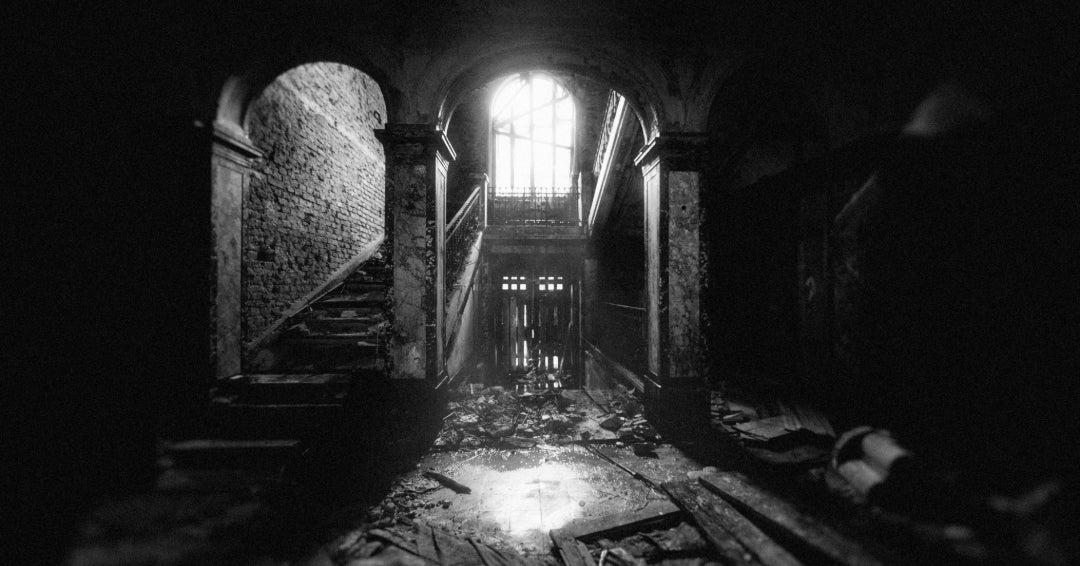Old houses where spirits roam the hallways, lingering around instead of passing on to the otherworld, are the subject of nightmares. Horror movies centered around haunted houses serve up endless jump-scare moments where the living dead torture anyone who dares to take up residence. Continue reading to learn some scary facts about the most haunted houses around the world.

Everything Kids Want to Know About Haunted Houses
Halloween is the time of year when old structures are converted into spooky attractions mimicking the real homes to unsettled spirits and ghosts. Reading children books about haunted houses is a fun way to learn more about what happens behind the rotting wood and broken glass. For inquisitive kids who want to know more about the abandoned, decrepit structures where unexplainable presences reside, here are some interesting facts about haunted houses.
Strange But True Haunted House Facts
Kids love learning about haunted houses and all things spooky for so many reasons reasons. For starters, these tales are packed with fantastical creatures, magical situations, and impossible scenarios, which really lets their imaginations run wild. They get to invent their own spooky characters and stories, which is a blast. Plus, holidays like Halloween offer a perfect chance to dive into these scary situations with family and friends. Continue reading to learn about some of the spookiest and strangest facts about haunted houses to share with your children.

(1) Not all haunted houses are filled with evil spirits.
Portland, Oregon is home to the Pittlock Mansion, imagined and designed by publishing magnate Henry Pittlock. The homeowners passed away shortly after construction was completed on this magnificent property. Visitors have observed windows closing, doors latching, and the movement of Henry Pittlock's portrait. Word on the street is that Henry and his wife, Georgiana continue to live in the lavish mansion, although they are reportedly very happy spirits.
(2) Homeowners selling a house must disclose if it is haunted.
In the some states, people are legally required to let prospective buyers know if the home is haunted. Specifically, in New York and New Jersey sellers must be up front with buyers about a home's reputation for being haunted or the detection of paranormal activity on the property.
(3) Walt Disney was the first to make a big profit.
The forward-thinking businessman pioneered the original, commercial haunted house using advanced technology to bring spirits to life. The wildly popular Haunted Mansion at Walt Disney World offers a creepy, interactive ride, sort of like an indoor rollercoaster, through a cold, dark mansion where creepy witches, ghosts, and other ghastly critters are patiently waiting.

(4) Carbon monoxide is the likely explanation for supposed hauntings.
TWhen residents of older homes report problematic occurrences, like pets barking or meowing for no apparent reason or the sensation of being watched, it may sound like the house is haunted. Sometimes people think they see ghosts or hear footsteps even though no one else is in the house. In reality, carbon monoxide is often present, and this chemical can cause hallucinations. Furthermore, older homes usually have aged appliances that can bang, rattle, and make other frightening noises that sound a lot like a haunted spirit.
(5) The scariest haunted house in the United States is McCamey Manor in Summertown, Tennessee.
The owners of this freakishly frightening attraction vet out all visitors before giving them the go-ahead to enter McCamey Manor. First they must watch a two-hour video preparing them for the scare of a lifetime, and more importantly, giving them a chance to reconsider their decision to enter at all. Would-be guests also need to present a doctor's note declaring they are healthy enough, especially from a cardiac standpoint, to endure a lengthy period of overly stimulating frights. In addition, a 40-page waiver must be signed and proof of insurance presented. Just to prove the extreme level of fear the attraction generates, the owners have been known to reward $20,000 to anyone who successfully finishes the experience.
(6) In 1915, Orton and Spooner Ghost House was the very first commercial haunted house.
While haunted houses can be traced back to the 1800s, historians credit the Orton and Spooner Ghost House as the first official structure set up as a permanent, money-making attraction for thrill seekers. A man by the name of Patrick Collins built a small cottage in Liphook, England for the purpose of scaring customers in exchange for a small sum of money. This tiny house is full of huge frights all powered by steam.
(7) Haunted houses are a big and profitable industry.
Estimates indicate that the haunted house industry ranges anywhere from $300 million to $500 million every year, largely during the month of October with temporary attractions drawing in tourists for a Halloween thrill. Big commercially, operated venues can make about $2 to $3 million, while smaller sites can earn closer to $50,000. In the United States, there are an estimated 1,200 attractions run by businesses for the purposes of turning a profit. An additional 2,000 haunted houses pop up each season to support local charities. For these locales, guests are asked for donations in exchange for a few minutes of entertaining jump scares.
(8) The Amityville Horror House is the most famous house invaded by paranormal activity.
In 1924, a beautiful 4,100 square foot home was built at 112 Ocean Avenue, Amityville, NY. A tragedy that took place five decades later forever changed the fate of this house. Robert DeFeo Jr. killed six family members in 1974 inside these four walls, for which he went on to serve a prison sentence until he passed away in 2021. When the Lutz family moved into the home a year later, they lasted a short 28 days before fleeing due to relentless, terrorizing paranormal activity. A number of books and films have shared the haunting story with audiences brave enough to endure the spine-tingling reports of ghosts. To this day, tourists seek out the house, perhaps in search of an encounter with a lingering spirit. The home has been renovated and the address changed to 108 Ocean Avenue in hopes of tricking all the people who flock to the site.
(9) Houses are haunted by the spirits of people who died there.
Many believe that houses become haunted by the spirits of those who died there, particularly if their death was violent, tragic (such as a murder or suicide), or if they have "unfinished business" tying them to the location. These spirits could be former residents or individuals with some other connection to the property.
(10) A poltergeist is a ghost that physically interacts with the environment causing disturbances.
A poltergeist, a term combining the German words "poltern" (to make noise) and "Geist" (spirit), refers to a supernatural phenomenon known for physical disturbances rather than visual sightings. Often called a "noisy ghost" or "rattling spirit," its defining trait is the ability to directly interact with its surroundings. This can manifest as unexplained sounds like knocking, banging, scratching, or footsteps. Objects might be thrown, slide across surfaces, vanish and reappear elsewhere, or even have furniture rearranged. Additionally, electrical issues like flickering lights or appliances turning on and off are common signs.
(11) Six teenagers died at a haunted house attraction at Six Flags Great Adventure.
In 1984, tragedy struck the Haunted Castle attraction at Six Flags Great Adventure in Jackson, New Jersey, when a fire claimed the lives of eight teenagers. The blaze, ignited by a lighter one of the teens used to navigate a dark hallway, rapidly spread, trapping the victims inside. This horrific incident led to legal repercussions for Six Flags, including an indictment for aggravated manslaughter.
(12) The Conjuring is based on a true story about a haunted house in Rhode Island.
The Conjuring tells the true story of Ed and Lorraine Warren, renowned paranormal investigators and demonologists. In 1971, who were called to a secluded, old farmhouse in Harrisville, Rhode Island. The Perron family was terrorized by escalating paranormal events, includig chilling noises, unexplained bruises, clocks mysteriously stopping at 3:07 AM, self-opening doors, and direct attacks from malevolent entities. As the Warrens delve into the haunting, Lorraine, a gifted clairvoyant, detects an intensely dark and powerful presence. Their investigation uncovers the house's grim past: it was once home to Bathsheba Sherman, an accused witch who cursed anyone who would claim her land before taking her own life. The Warrens soon realize they're facing the most terrifying case of their careers. They push their spiritual limits to the brink, desperately trying to save the family from the malevolent force, culminating in a harrowing attempt to exorcise the demonic possession from Carolyn Perron.

Frightening Books to Read This Halloween
Visiting haunted houses around Halloween is a spooky way to get into the spirit of the holiday. Share these haunted house facts before visiting an attraction for some extra fright! And when you return home with your little ones, settle in by the fire to read a few good Halloween picture books.







